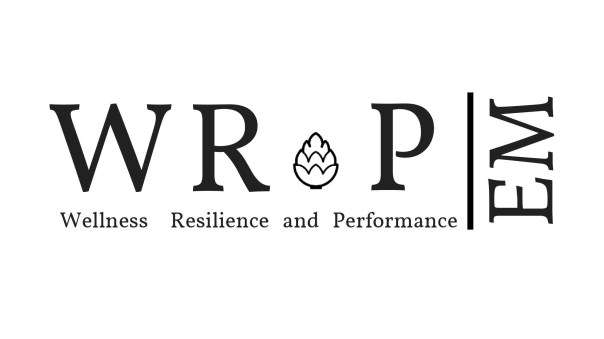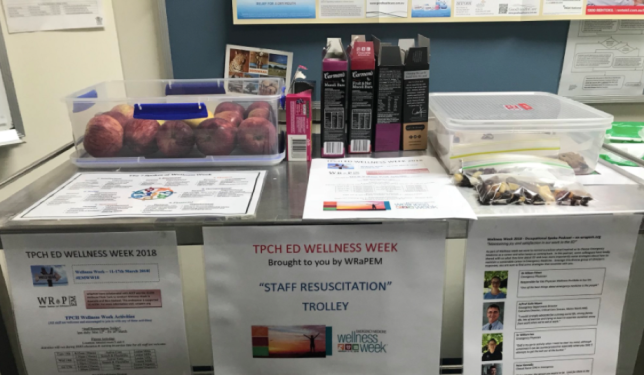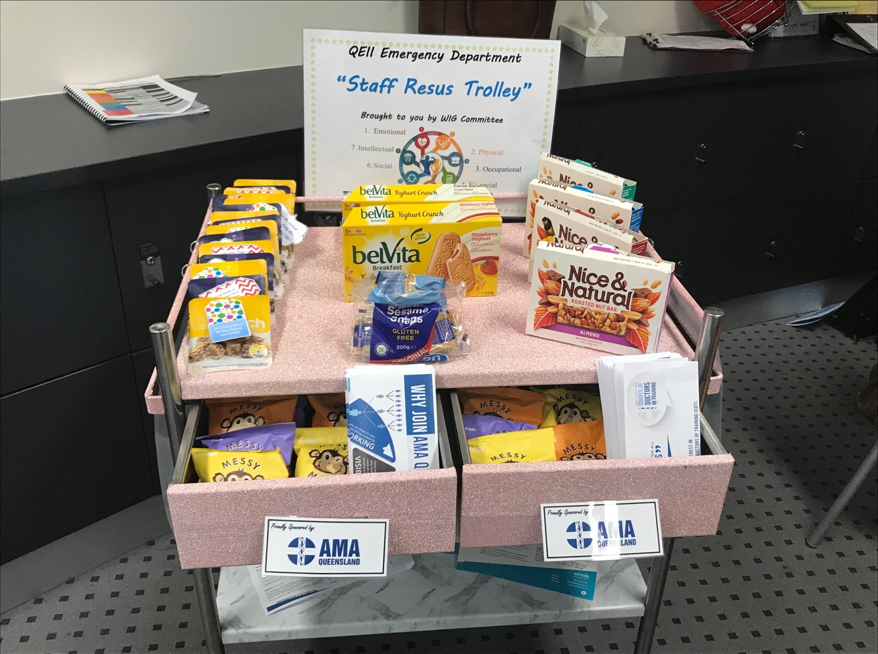
How to ‘ Staff Resuscitation Trolley’
Summary
Sometimes all it takes to boost both staff morale and staff performance is a simple, low cost intervention.
Monday evenings have proven for many years to be the busiest time in Australian EDs.
Extensive work by Dr Jane Lemaire has shown the link between adequate staff nutrition and physician cognition. [1]
On the basis of the above, WRaP EM would like to help you start your own Staff Resuscitation Trolley Project.
The Staff Resus Trolley idea was first started at the Prince Charles Hospital (TPCH) by Dr Melanie Rule, FACEM, as a Wellness Week initiative in March 2018.
With her permission, staff at the Queen Elizabeth II (QEII) ED adapted the concept. They gained funding to run it for 12 weeks through Winter in 2018 from the AMA.
Below is a step wise development programme you might consider and some pictures of what both trolleys looked like.
Step Wise Guide
- Discuss the concept with your Department Director. Most EDs don’t allow food anywhere near patients! But even having food near, but not in, patient areas can be a point of contention in some Departments.
- Determine Funding Model for Staff Resuscitation Trolley. I approached the Australian Medical Association (AMA) with a costing of 30 dollars per week. They provided funding for 10 weeks through Winter.
- Design your physical trolley and source wellness related flyers for the trolley. It’s not just about the food – it can be a vehicle for enabling people to think about and discuss their wellness too. At QE II, they used resources from the Doctors Health Advisory Service and OPTUM (their Employee Assistance Programme for ALL staff) to be placed in the trolley. See picture below.
- Consistency of the trolley rollout is key – so staff will know when to expect it. At QEII, they decided that Monday were their busiest evening shifts, especially in Winter. So, their Staff Resus trolley is always on a Monday evening from 16.00 – 23.00 in their clinical handover room, through Winter. This allows for all staff on the Day, evening or night shift to access the Trolley.
- Try and gather some data to encourage sustainability of funding. QEII plans to gather really simple stuff – how many ‘units’ of food, a simple feedback after a few weeks of ‘plus/delta’ format, what the total cost was. This may provide you with enough qualitative evidence to keep your funding going or get approval for the following year.


- Lemaire, J.B., et al., Food for thought: an exploratory study of how physicians experience poor workplace nutrition.Nutr J, 2011. 10(1): p. 18.

